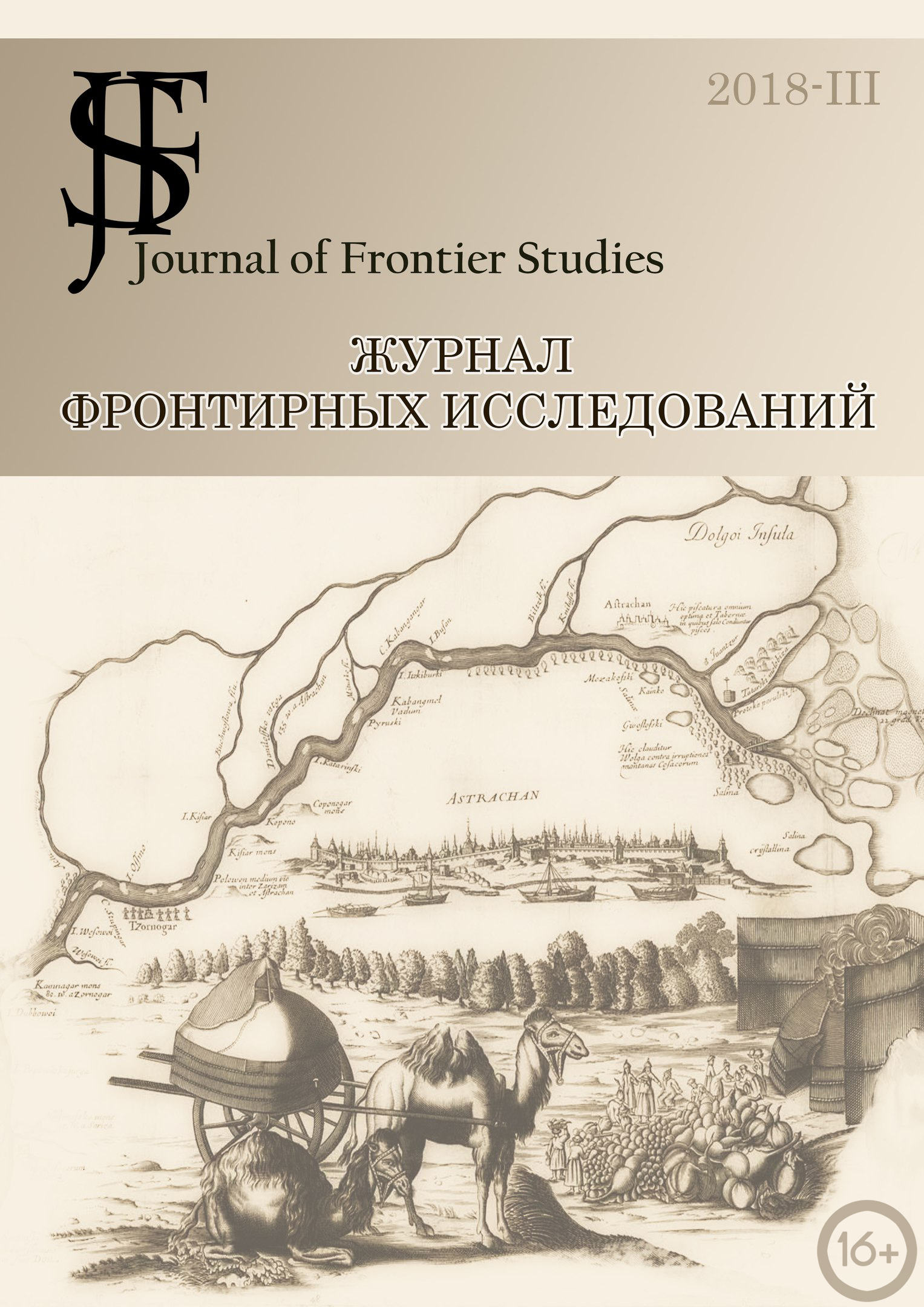Abstract
This article analyzes the semantics of the Fox image in the context of the model of intercultural communication in the cultural landscape of Japan. As a rule, foxes in Japanese culture act in several forms. They are a consortium of rice goddess Inari, and as such they are placed in many temples in Japan. In folk beliefs the Fox is still ambivalent creature capable of shape-shifting. It is believed that this aspect of the symbolism of foxes migrated to Japan from China, where common ideas about special foxes with supernatural abilities. Taking the form of charming beauties, they deprive men of vitality, killing them. But they can harm a person otherwise by sending him illness. This spectrum of contradictory ideas reflects both authentic representations of the Japanese people and borrowed from foreign cultures. In these believes the Fox is a kind of marginal being – a bearer of blessings, and the bearer of negative qualities that threaten a man. At the level of everyday life, the image of the Fox-werewolf was a reflection on the fear of traditional Japanese society before the possible heterogeneity. Any exit beyond homogeneity was perceived as a threat to society, and the bearer of special features was declared be a monster or an individual connected with monsters.
However, this ambivalence is not static, diametrically opposed features are constantly intertwined, transformed into each other, and it is impossible to distinguish what was borrowed, and where are the development of national beliefs and popular views. However, in China ideas about foxes often performed the same function, designed to be a reflection on encounter with the Other.
References
Bolton, R. (1980). Nine Quechua-Qolla Narratives: Peruvian Folktale Texts. Anthropos, 75(1/2), 140-162.
Campany, R. F. (2015). A garden of marvels : tales of wonder from early medieval China. Honolulu: University of Hawai‘i Press.
Casal , U. (1959). The Goblin Fox and Badger and Other Witch Animals of Japan (Т. Vol. 18). Asian Folklore Studies.
Foster, M. D. (2009). Pandemonium and Parade: Japanese Monsters and the Culture of Yokai. Berkeley: University of California Press,.
Hearn, L. (2005). Glimpses of Unfamiliar Japan. (2. Retrieved on February 19, Ред.) Project Gutenberg e-text edition.
Hearn, L. P. (1894). Glimpses of Unfamiliar Japan. Boston: Boston. Houghton Mifflin.
Johnson, T. W. (1974). Far Eastern Fox Lore. Asian Folklore Studies, 33(1), 35-68.
Kamstra, J. H. (1987). Who was First: The Fox or the Lady? The God of Fushimi in Kyōto. В Effigies Dei. Essays on the History of Religions (стр. 97-111). Brill.
Kirby, R. J. (1911). Uke-mochi-no kami, the Shinto Godess of Food. Transactions the Asiatic Society of Japan, 38, 39-56.
Li Wei-tsu. (1948). On the Cult of the Four Sacred Animals (四 大門) in the Neighbourhood of Peking. Folklore Studies, 7, 1-94.
Metevelis, P. (2009). Japanese Mythology and the Primeval World: A Comparative Symbolic Approach. New York: iUniverse.
Nozaki, K. (1961). Kitsune. Japan’s fox of mystery, romance and humor. Tokyo.
Record of Miraculous Events in Japan: the Nihon ryoiki. (2013). (B. D. Watson, Trans.) New York: Columbia University Press.
Reider, N. T. (2003). Transformation of the Oni: From the Frightening and Diabolical to the Cute and Sexy. Asian Folklore Studies, 62(1), 133-157.
Reider, N. T. (2005). Shuten Dōji: "Drunken Demon". Asian Folklore Studies, 64(2), 207-231.
Reider, N. T. (2010). Japanese Demon Lore: Oni from Ancient Times to the Present. Logan: Uta State of University Press.
Smyers, K. (1999). The Fox and the Jewel: Shared and Private Meanings in Contemporary Japanese Inari Worship. Honolulu: University of Hawaii Press.
Smyers, K. A. (1996). "My Own Inari": Personalization of the Deity in Inari Worship. Japanese Journal of Religious Studies, 23(1/2), 85-116.
Suzuki, K. (2007). The Making of Tōjin Construction of the Other in Early Modern Japan. Asian Folklore Studies, 66(1/2), 83-105.
Teigo Yoshida. (1967). Mystical Retribution, Spirit Possession, and Social Structure in a Japanese Village. Ethnology, 6(3), 237-262.
Teigo Yoshida. (1981). The Stranger as God: The Place of the Outsider in Japanese Folk Religion. Ethnology, 20(2), 87-99.
Visser, M. W. (1908). The Fox and the Badger in Japanese Folklore. Transactions of the Asiatic Society of Japan, 36, 1–159.
Wallen, M. (2006). Fox. London: Reaktion Books.
Аполлодор. (1972). Мифологическая библиотека. Ленинград: Наука.
Березкин, Ю. Е. (2004). Ареальное распределение мотивов в мифологиях Америки и Северо-Восточной Азии (к вопросу о заселении Нового Света, краткие результаты текущих исследований). В Studia Ethnologica. Труды факультета этнологии. (стр. 116-159). СПб: Издательство Европейского университета в Санкт-Петербурге.
Березкин, Ю. Е. (2007). Мифы заселяют Америку. Ареальное распределение фольклорных мотивов и ранние миграции в Новый Свет. Москва: О.Г.И.
Игауэ Нахо. (2004). Нахо Игауэ Взаимные образы русских и японцев (по фольклорным материалам). Вестник Евразии(1), 95-121.
Нихон сёки – Анналы Японии (Т. 2). (1997). (Л. М. Ермакова, & А. Н. Мещеряков, Перев.) СПб.: Гиперион.
Павсаний. (2002). Описание Эллады. Москва: Ладомир.
Пополь-Вух. Родословная владык Тотонакапана. (1993). Москва: Наука.
Яковенко, С. В. (2016). Ёкай как важный фактор формирования японской культуры: исторический аспект. Ойкумена(3 (38)), 105-116.
Якушенков, С. Н. (2001). Семиотический анализ духовной культуры аймара. Астрахань: Издательство Астраханского государственного педагогического университета.
Якушенков, С. Н., & Якушенкова, О. С. (2012). Тело варвара: конструирование образа Чужого на китайском фронтире. Каспийский регион: политика, экономика, культура(4), 234–241.

This work is licensed under a Creative Commons Attribution-NonCommercial-NoDerivatives 4.0 International License.

